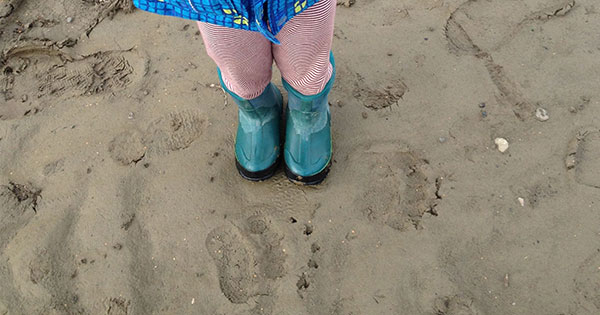
This summer there were four brown bear maulings on the Kenai Peninsula, where we live. A sow with cubs attacked a 47-year-old hunter from Texas who was making moose calls in remote woods near the head of a glacier-fed lake. About 25 miles away, a 62-year-old man walking his dog in the woods was mauled by another bear. Near the same lake where the Texas man was hunting, a 20-year-old lodge employee went for a jog with her co-worker and was bitten and clawed by a bear. A 49-year-old national forest ranger was attacked by a bear while working on a wildfire near one of the state’s most popular trails. All of the victims survived. Maulings are rare; when they happen, they make statewide media. But these incidents form a backdrop to our lives.
So when I took my daughters for a bike ride the other evening, as slanted sunlight lit up yellow birch leaves against a deeply blue sky, I called out to them to ring their bike bells as they zoomed off ahead of me down the undeveloped dirt road that extends a quarter mile or so beyond our house into about 100 acres of wild meadows, woods, and tangled ravines.
The noisemakers are fun, but they’re also practical. As I walked behind them with our blue heeler on a leash, I was acutely aware that there could be bear or moose around. Moose—including protective moose cows with their calves—frequent the area pretty much year-round. A black bear generally comes through once each spring and fall. I’ve heard there’s an active den nearby. Shrubby alders are closing in on the road so tightly that you can’t see five feet off the road.
“Loo-de-loo-de-loo-de-loo-de-loo!” I yodeled noisily, not convinced the kids’ bells were loud enough to alert any wildlife that might be nearby.
Black and brown bears appear regularly in Homer and in the willow- and spruce-clad hills that roll away from town in three directions. Estimates are sketchy for the number of bears that inhabit the Switzerland-sized peninsula where we live. Some say that 3,000 to 4,000 black bears and about 500 brown bears live here, but because parts of the peninsula are so remote, and the animals travel widely, any approximation of their populations seems like a shot in the dark.
“Ring your bells!” I called out again, making sure my tone was cheerful and not cautionary. I don’t want my girls to be afraid to ride their bikes.
When I asked Tim Charnon, the district ranger mauled last June while he was scouting for a good spot to put a fire line, he spoke in a measured way about his brown bear encounter. The whole thing was over in about 10 seconds. It seems he didn’t have time to be afraid. He was about half a mile off trail when a young bear, three to four years old, charged out of the brush about 20 feet away. After knocking Charnon to the ground, the bear jumped on his back and clawed and bit his legs. He couldn’t remember what it felt like to have a brown bear that weighed 300 or 400 hundred pounds on his back. But he does remember that he managed to stop the bleeding from his leg wounds by applying pressure, then walked down the slope to meet the rest of his crew. A helicopter landed in a meadow alongside a nearby backcountry cabin to evacuate him to an Anchorage hospital. Doctors surgically cleaned nearly a dozen puncture wounds and packed them with gauze.
Knowing the actual number of bears that live in the region doesn’t seem immediately relevant when your office is the woods, or when you are going for a short walk, even on a gravel road, even within city limits, even within shouting distance of your house.


